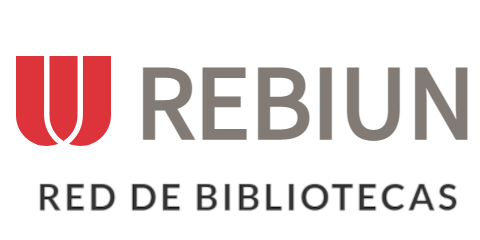Belleza en Línea: Variables que influyen en la lealtad y compra electrónica del consumidor en el sector cosmético en Lima
DOI:
https://doi.org/10.69639/arandu.v12i3.1531Palabras clave:
cosméticos, compra electrónica, lealtadResumen
La compra electrónica de cosméticos es un fenómeno creciente en Lima y evoluciona bajo la influencia de ciertas variables. El objetivo principal es revisar y analizar el nivel de consistencia de las variables que generan lealtad del consumidor y compra digital. La investigación busca comprender en qué medida la satisfacción, el eWOM (boca a boca electrónico), la seguridad y la confianza influyen en las variables dependientes del modelo. La metodología utilizada en este artículo se basa en las directrices del modelo IMRD (Introducción, Métodos, Resultados y Discusión) y un cuestionario para recolectar datos de 153 compradores en línea. Los resultados mostraron una relación positiva entre la confianza y la lealtad en la generación de una compra en línea; además, evidencian cómo la seguridad y el eWOM generan confianza, y la satisfacción actúa como motor de la lealtad. El modelo demuestra ser fiable y presenta una sólida capacidad predictiva, lo que sugiere un aporte valioso a la literatura. Por lo tanto, el estudio concluye que los consumidores realizan una compra en línea cuando tienen confianza y son leales a una marca o canal virtual.
Descargas
Citas
Abarna, K. R., Vijayalakshmi, V. & Andal, V. (2023). Impact of risk and trust on the purchase decision of online shopping customers- a study with reference to chennai city. International Journal of Professional Business Review. 8(4), p. e01150. https://doi.org/10.26668/businessreview/2023.v8i4.1150
Al Adwan, A., Zamil, A.& Areiqat, A. (2021). Factors affecting online shopping behavior of consumers understanding factors leading to consumers’ loyalty. Academy of Strategic Management Journal. 20(2), p. 1-8.
Al Hamli, S. & Elnasr, A. (2023). "Factors Influencing Consumer Behavior towards Online Shopping in Saudi Arabia Amid COVID-19: Implications for E-Businesses Post Pandemic," JRFM, MDPI, vol. 16(1), p.1-21, January.
Al-Nabhani, K., Wilson, A., McLean, G. (2022). Examining consumers' continuous usage of multichannel retailers' mobile applications. Psychology and Marketing. 39(1), 168–195. https://doi.org/10.1002/mar.21585
Alfonso, A., Carneiro, J. & Azevedo, A. (2024), “The Impact of COVID-19 on eCommerce: A Systematic Review of the Literature on the Purchasing Behavior of Online Retail Consumers", Journal of Marketing Research and Case Studies, Vol. 2024, p. 2 https://doi.org/10.5171/2024.403212
Allison, Jerry. (2013). E-Commerce: Exactly What Is It? www.drjerryallison.hubpages.com
Arizal, N., Nofrizal, Dwika, W. & Hadiyati. (2024). Gen Z Customer Loyalty in Online Shopping: An Integrated Model of Trust, Website Design, and Security. Journal of Internet Commerce. 23(2), pp. 121–143. https://doi.org/10.1080/15332861.2024.2330812
Basaure, M., Joignant A. & Mascareño, A. (2021). Between distancing and interdependence: The conflict of solidarities in the COVID-19 pandemic. Sociological Perspectives. 64(5), 706-725. https://journals.sagepub.com/doi/10.1177/07311214211005492
Bhattacharya, S., Sharma, R. & Gupta, A. (2022). Country-of-origin and online retailing ethics: the mediating role of trust and satisfaction on purchase intention. International Journal of Emerging Markets. 11(1), pp. 70-80. https://doi.org/10.1108/IJOEM-08-2021-1233
Camilleri, M. (2022). E-commerce websites, consumer order fulfillment and after-sales service satisfaction: the customer is always right, even after the shopping cart check-out. Journal of Strategy and Management. Vol. 15 No. 3, pp. 377-396. https://doi.org/10.2139/ssrn.3853156
Centro de Investigación de Economía y Negocios Globales. (2022). Reporte de Tendencias. Belleza y Cuidado Personal. P. 1. https://www.cien.adexperu.org.pe/wp-content/uploads/2022/04/CIEN_RT_Marzo_2022.pdf
Chai, J., Malhotra, N. & Alpert, F. (2015). A two-dimensional model of trust-value-loyalty in service relationships. Journal of Retailing and Consumer Services. Vol. 26, pp. 23-31. https://doi.org/10.1016/j.jretconser.2015.05.005
Chen, A., Wan, J. & Lu, Y. (2022). Repairing the trust in ride-sharing after security incidents. Industrial Management and Data Systems. Vol. 122 No. 1, pp. 118-136. https://doi.org/10.1108/IMDS-10-2020-0623
Cheung, M., & Thadani, D. (2012). The impact of electronic word-of-mouth communication: A literature analysis and integrative model. Decision Support Systems. https://doi.org/10.1016/j.dss.2012.06.008
Churchill, G. A., & Surprenant, C. (1982). An investigation into the determinants of customer satisfaction. Journal of Marketing Research. 19(4), 491–504. https://doi.org/10.2307/3151722
Diaz, L. (2023). Evaluación de los efectos de la confianza del consumidor sobre el boca-oído electrónico (e-WoM) en tiendas de comercio electrónico en Colombia. Innovar, 33(87), pp. 123–137. https://doi.org/10.15446/innovar.v33n87.105513
Digital Economy Association (ACEPI) & International Data Corporation (IDC). (2020). Digital Economy in Portugal 2020. Obtained from https://www.comerciodigital.pt/pt/estar-informado/estudo-acepi-2020/
Euromonitor International. (2024). Beauty and Personal Care in Latin America. Passport. https://www-portal-euromonitor-com.ezproxy.ulima.edu.pe/analysis/tab
Euromonitor International. (2024). Beauty and Personal Care in Peru. Passport. https://www-portal-euromonitor-com.ezproxy.ulima.edu.pe/analysis/tab
Euromonitor International. (2024). Market size. Passport. https://www-portal-euromonitor-com.ezproxy.ulima.edu.pe/magazine/homemain/
Everitt, B. S. y Wykes, T. (2001). Diccionario de Estadística para Psicólogos. España: Ariel.
Falahat, M., Lee, Y., Foo, Y. & Chia, C. (2019). A model for consumer trust in e-commerce. Asian Academy of Management Journal. Vol. 24, Supp. 2, p. 96. 10.21315/aamj2019.24.s2.7
Farzin, M., Bagheri Abbassalikosh, A., Sadeghi, M. and Makvandi, R. (2021), “The effect of sensory brand experience and brand equity on WTP a price premium in Iranian fast food restaurants: mediating role of eWOM”, Journal of Foodservice Business Research. 26(3), pp. 528–548. 10.1080/15378020.2021.2017212
Firdayanti, R. (2012). Persepsi risiko melakukan e-commerce dengan kepercayaan konsumen dalam mmebeli produk fashion online. Journal of Social and Industrial Psychology. y, 1(1), 28-33. (In Indonesian) https://doi.org/10.15294/SIP.V1I1.2660
Freeman, D., Pisani, R. & Purves, R. (2007). Statistics. 4ta edición.
Ganesan, S. (1994) “Determinants of Long-term orientation in buyer-seller relationships,” Journal of Marketing (58), 1994, pp. 1-19
Gass, R. (2015). Social Influence. International Encyclopedia of the Social & Behavioral Sciences (Second Edition). Elsevier, p. 348-354. https://doi.org/10.1016/B978-0-08-097086-8.32074-8
Gefen, D., Karahanna, E. & Straub, D. (2003). Trust and TAM in Online Shopping: An Integrated Model. MIS Quarterly. 27. 51-90. https://doi.org/10.2307/30036519
Goyette, I., Ricard, L., Bergeron, J., & Marticotte, F. (2010). e-WOM Scale: Word-of-mouth measurement scale for e-services context. Canadian Journal of Administrative Sciences. Vol.27, No.1, pp. 5-23. https://doi.org/10.1002/CJAS.129
Hair, J., Sarstedt, M., Ringle, C & Mena, J. (2011). An assessment of the use of partial least squares structural equation modeling in marketing research. Journal of the Academy of Marketing Science 40:414–433. 10.1007/s11747-011-0261-6
Hair, J. F., Hult, G. T. M., Ringle, C. M., & Sarstedt, M. (2017). A Primer on Partial Least Squares Structural Equation Modeling (PLS-SEM) (2nd ed.). SAGE Publications.
Hair, J., Risher, J., Sarstedt, M., Ringle, C. (2018). When to use and how to report the results of PLS-SEM. European Business Review, 31(1), 2-24. https://doi.org/10.1108/EBR-11-2018-0203
Hidayanto, A.N., Ovirza, M., Anggia, P., Budi, N.F.A., & Phusavat, K. (2017). The roles of electronic word of mouth and information searching in the promotion of a new E-commerce strategy: A case of online group buying in Indonesia. Journal of Theoretical and Applied Electronic Commerce Research. Vol 12, Issue 3, p. 72-73. https://doi.org/10.4067/S0718-18762017000300006
Hong, J. & Kang, E. (2022). Food Delivery Applications Becoming Alligator of Hotel Supply Chain: An Empirical Analysis. Journal of Distribution Science. Vol. 20, No. 9, p. 97-107. https://doi.org/10.15722/jds.20.09.202209.97
Huete-Alcocer, N. (2017). A literature review of word of mouth and electronic word of mouth: Implications for consumer behavior. Frontiers in Psychology. Vol. 8, p. 2-3. https://doi.org/10.3389/fpsyg.2017.01256
IPSOS. (2022). Generaciones en el Perú 2022. https://www.ipsos.com/es-pe/generaciones-en-el-peru-2022
Kim, S. & Park, H. (2013). Effects of various characteristics of social commerce (s-commerce) on consumers’ trust and trust performance. International Journal of Information Management. Vol. 33 (2), p. 318-332. https://doi.org/10.1016/j.ijinfomgt.2012.11.006
Kim Y., Seok J. & Roh T. (2023). The linkage between quality of information systems and the impact of trust-based privacy on behavioral outcomes in unmanned convenience store: Moderating effect of gender and experience. Technological Forecasting and Social Change. Vol. 196, p. 122852. https://doi.org/10.1016/j.techfore.2023.122852
Kimery, K. M., & McCord, M. (2002). Third-party assurance Mapping the road to trust in e-retailing. Journal of Information Technology Theory and Application. Vol. 4(2), 63-82.
Kotler, P., Armstrong, G. (2021). Fundamentos de Marketing. Pearson Educación. http://www.ebooks7-24.com.ezproxy.ulima.edu.pe/?il=16954
Kotler, P., & Keller, K. L. (2009). Marketing management (13th ed.). Pearson Education International.
Kurniadi, H. & Rana, J. (2023). The power of trust: How does consumer trust impact satisfaction and loyalty in Indonesian digital business? Scopus. Vol. 19, Issue 2, p. 237-240. 10.21511/im.19(2).2023.19
Lee, J. & Hong, I. (2019). Consumer’s Electronic Word-of-Mouth Adoption: The Trust Transfer Perspective. International Journal of Electronic Commerce. Vol. 23(4), p. 595-627. https://doi.org/10.1080/10864415.2019.1655207
Lin, C. & Chuang, S. (2018). The Importance of Brand Image on Consumer Purchase Attitude: A Case Study of E-Commerce in Taiwan. Studies in Business and Economics,13(3) p. 91-104. https://doi.org/10.2478/sbe-2018-0037
Makanyeza, C., & Chikazhe, L. (2017). Mediators of the relationship between service quality and customer loyalty: Evidence from the banking sector in Zimbabwe. International Journal of Bank Marketing. Vol 35(3), 540-556 https://doi.org/10.1108/IJBM-11-2016-0164
McKnight, D.H., Cummings, L.L., and Chervany, N.L. (1998) “Initial trust formation in new organizational relationships,” Academy of Management Review (23:3) pp. 473-490. https://doi.org/10.1016/S0963-8687(02)00020-3
McKnight, D.H., Choudhury, V., & Kacmar, C. (2002). "The Impact of Initial Trust on the Adoption of Internet Technologies". The Journal of Strategic Information System. Vol. 11 (3-4), pp. 297-323.
Mesquita de Sousa, E., Luiz Lopes, E., Herrero, E., & Fernando Varotto, L. (2020). Is loyalty still the same? An investigation of the antecedents of loyalty. International Journal of Business, Economics and Management. Vol. 7, n. 3, p. 175 https://doi.org/10.18488/journal.62.2020.73.174.191
Nguyen, H., Nuyen, T. & Bui, T. (2022). Impact of smart locker use on customer satisfaction of online shoppers in Vietnam. Humanit Soc Sci Commun 9, p. 403. https://doi.org/10.1057/s41599-022-01428-6
Organismo Supervisor de Inversión Privada en Telecomunicaciones. (2024). OSIPTEL: más de 90 % de hogares peruanos encabezados por mujeres cuentan con acceso a internet fijo o móvil. Noticias. https://www.osiptel.gob.pe/portal-del-usuario/noticias/osiptel-mas-de-90-de-hogares-peruanos-encabezados-por-mujeres-cuentan-con-acceso-a-internet-fijo-o-movil/
Parraga-Alva, J., Alcivar-Cevallos, R, Vaca-Cárdenas, L & Meza, J. (2021). UrbangEnCy: An emergency events dataset based on citizen sensors for monitoring urban scenarios in Ecuador. ScienceDirect. Vol. 34, p. 106693. 10.1016/j.dib.2020.106693
Penfield, R.D., Giacobbi Jr., P.R. (2004) Applying a score confidence interval to Aiken's item content-relevance index. Measurement in Physical Education and Exercise Science. 8(4), 213–225. 10.1207/s15327841mpee0804_3
Pizzutti, C. & Fernandes D. (2010). Effect of recovery efforts on consumer trust and loyalty in e-tail: A contingency model. International Journal of Electronic Commerce. Vol 14, No. 4, p. 127-160. https://doi.org/10.2753/JEC1086-4415140405
Punyatoya, P. (2018). Factors affecting trust towards online retailers in India: An empirical study. International Journal of Business Innovation and Research. Vol 17, No. 3, p. 342-360. https://doi.org/10.1504/IJBIR.2018.095541
Purwanto, P., & Kuswandi, K. (2017). Effects of flexibility and interactivity on the perceived value of and satisfaction with e-commerce (evidence from Indonesia). Market-Tržište. Vol. 29, No. 2, p. 146 https://doi.org/10.22598/mt/2017.29.2.139
Ratnasari, I., Siregar, S., Maulana, A. (2021). How to build consumer trust towards e-satisfaction in e-commerce sites in the covid-19 pandemic time? International Journal of Data and Network Science. P. 129-128. 10.5267/j.ijdns.2021.2.001
Ruppel, C., Underwood-Queen, L., & Harrington, S.J. (2003). E-commerce: The roles of trust, security, and type of e-commerce involvement. e-Service Journal. 2(2), 25-45. https://doi.org/10.2979/esj.2003.2.2.25
Sánchez-Alzate, J.A. & Restrepo, L.A.M. (2017). Trust as key element for e-commerce purchases. The case of consumers in antioquia (Colombia). Innovar. 27(64), pp. 11–22. https://doi.org/10.15446/innovar.v27n64.62365
Sánchez, F. (2020). JASP Introducción. Konrad Lorenz. https://repositorio.konradlorenz.edu.co/handle/001/2484
Santosa, S., Mudiantono, M., Murniyono, C., Hersugondo, H. & Soesanto, H. (2020). Increasing consumers to consumers (C2C) e-commerce in Central Java, Indonesia. Accounting. Vol. 6(5), pp. 753–762. https://doi.org/10.5267/j.ac.2020.6.008
Serman, Z., Sims, J. (2022). Source Credibility Theory: SME Hospitality Sector Blog Posting During the Covid-19 Pandemic. Inf Syst Front 25, 2317–2334. https://doi.org/10.1007/s10796-022-10349-3
Siddiqui, K. I., Azam I. M., & Mullick, N. H. (2019). Customer satisfaction in achieving customer. Vol. 4, No.1, p. 211-219.
Solomon, Michael R. (2008). Comportamiento del consumidor. (7ma. Ed.) México: Pearson educación.
Soper, D. (s.f). A-priori Sample Size Calculator for structural equation models. Recuperado el 22 de septiembre de 2024, de: http://www.danielsoper.com/statcalc
Tan, S. & Chen, W. (2021). Building Consumer Trust in Online Food Marketplaces: The Role of Wechat Marketing. International Food and Agribusiness Management Review. 24, 5, 845-862. https://doi.org/10.22434/IFAMR2020.0159
Taylor, S., Donovan, L. & Ishida, C. (2014). Consumer Trust and Satisfaction in the Formation of Consumer Loyalty Intentions in Transactional Exchange: The Case of a Mass Discount Retailer. Journal of Relationship Marketing. 13(2), pp. 125–154. https://doi.org/10.1080/15332667.2014.910076
Wang, Y., Zhang, M., Li, S., McLeay, F. & Gupta, S. (2021). Corporate Responses to the Coronavirus Crisis and their Impact on Electronic-Word-of-Mouth and Trust Recovery: Evidence from Social Media. British Journal of Management. Vol. 32(4), p. 1184-1202. https://doi.org/10.1111/1467-8551.12497
Wong Chee Hoo, Aw Yoke Cheng, Alex Hou Hong Ng & Syarifah Mastura Bt Syed Abu Bakar. (2024). Factors Influencing Consumer Behaviour towards Online Purchase Intention on Popular Shopping Platforms in Malaysia. Vol. 21, p. 544-546. 10.37394/23207.2024.21.45
Zelalem, B. (2021). Factors influencing building consumers’ initial trust in e-commerce. Proceedings on Engineering Sciences. Vol. 03, No. 3, pp. 273-282. https://doi.org/10.24874/PES03.03.004
Publicado
Cómo citar
Número
Sección
Licencia
Derechos de autor 2025 Mariana Ximena Ferreyros Corigliano, Tamara Victoria Aguilar Tarazona

Esta obra está bajo una licencia internacional Creative Commons Atribución 4.0.





















